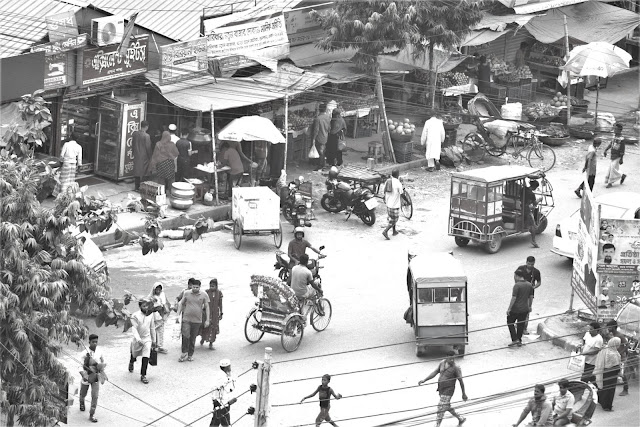Back to the future: Integrated Rural Accessibility Planning (IRAP) for a post-COVID world
I have worked in rural transport for a decade and have been
out of the sector for even longer. but as a colleague once observed, you can
take the woman out of transport, but you can’t take transport out of the woman,
which is why, probably, I have been thinking about the implications the current
COVID 19 crisis on transport provision, especially for marginalised women (and
men) and children in rural areas.
Where I live right now, in Malaysia, containment measures
for the COVID 19 virus goes under the apt name of ‘movement control’ which
though it still is about control sounds less carceral than the term ‘lockdown’.
At different stages of this MCO (as Malaysians call it) we have been allowed
limited access to different spaces. Right now, the RMCO (recovery movement
control order) is relatively relaxed and for the most part it would seem that in
Malaysia at least we can move about freely, while wearing masks in public
spaces and adhering to social distancing protocols.
Of course this is not
the same everywhere, and given the little we know about the behaviour and
origins of this virus and the possibilities (real in some countries) of second and
third waves of infection, the talk about changing the way we live should be
moving beyond the realm of discourse into practice. In this context, and
recognising that we have spent the last decades, maybe even the last century,
facilitating peoples’ mobility, trying to make movement accessible to everyone,
it surely is time to think about the implications of doing exactly the
opposite?
The big conversations around
mobility during the pandemic have focused on the crippling of the aviation
industry and other forms of international and regional passenger transport as
well as public transportation in the megacities. We know that many airline
companies were compelled to lay off staff and even declare bankruptcy. But what
about rural transport in countries of the global south? Our goal as rural
transport development researchers, planners and policy activists has been to
reduce the isolation of rural communities, and we have worked towards ensuring
that women, men and children in the hinterland, away from the main urban areas
and formal road networks, have the opportunity to access markets and social
services. It does seem ironic then that ‘isolation’ seems to have emerged as
the preferred way of containing the virus and dealing with the pandemic.
We are seeing now that
relative isolation, alongside physical distance and lower population density,
can have the benefit of containing the spread of the corona virus and potential
future zoonotic diseases. Research
carried out in the past has shown us that opening transport corridors have been
mixed in their impact – bringing in external infections to hitherto isolated
communities while at the same time providing access to health services that our
current development model has sought to concentrate in towns and cities. This
concentration of services (markets, schools, hospitals etc) in hubs, or urban
centres, where population densities are high and there are ‘economies of scale’
to service provision, has meant that as rural transport specialists our challenge
has been to design systems of infrastructure provision and transport services
to enable women, men and children in the periphery to reach those centres. Even
though the sector has been dominated by road engineers, there are a few voices
in the wilderness that have argued that rural transport planning requires an
equal, if not greater emphasis, on transport services – and that affordable
mobility is what is key.
But maybe, as we imagine the future, it is time to bring back a concept that had a lot of currency in the late 1990s and early years of this century but seems to have fallen out of the conceptual thinking of the transport sector – squashed perhaps by the neo-liberal economists in the international financial institutions whose preference for shining big hospitals as opposed to a decentralised network of health centres is no secret, in subtle collusion no doubt with the motorised transport lobby and infrastructure construction contractors. The concept is that of integrated rural accessibility planning (IRAP). The ILO invested a lot of money and time on developing the concept, the tools and a whole body of practical knowledge around IRAP.
The question is, are rural transport professionals ready to throw down the gauntlet? To reimagine a different world?
[1] pp 31 ILO (2003) Integrated Rural Accessibility Planning (IRAP) Modular Training Package Harare, International Labour Organization/Advisory Support Information Services and Training Programme for Africa (ILO/ASIST – Africa), 2003, ISBN 92-2-114323-6 accessed on 31/08/2020 on https://www.ilo.org/dyn/asist/docs/F1029928975/irap_training.pdf


.jpg)
Comments
Post a Comment